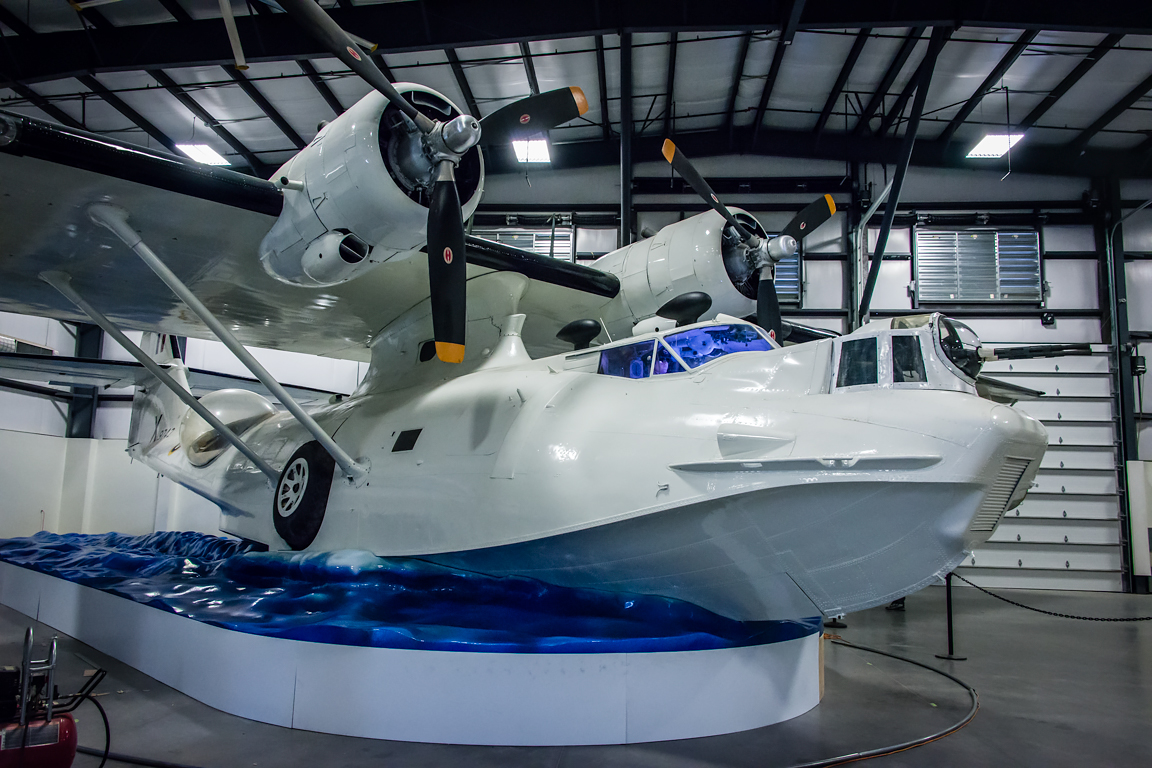Pima Air and Space Museum, Part 10
The next hanger contains some real jewels — for example this P-51D Mustang fighter which is widely considered to be the best American fighter of WWII. The P-51 was the response from North American Aviation to an RFP by the Brits for a new fighter. The original engine was underpowered at high altitudes — but an upgrade to a Rolls-Royce Merlin made the P-51D a superb fighter at all altitudes.

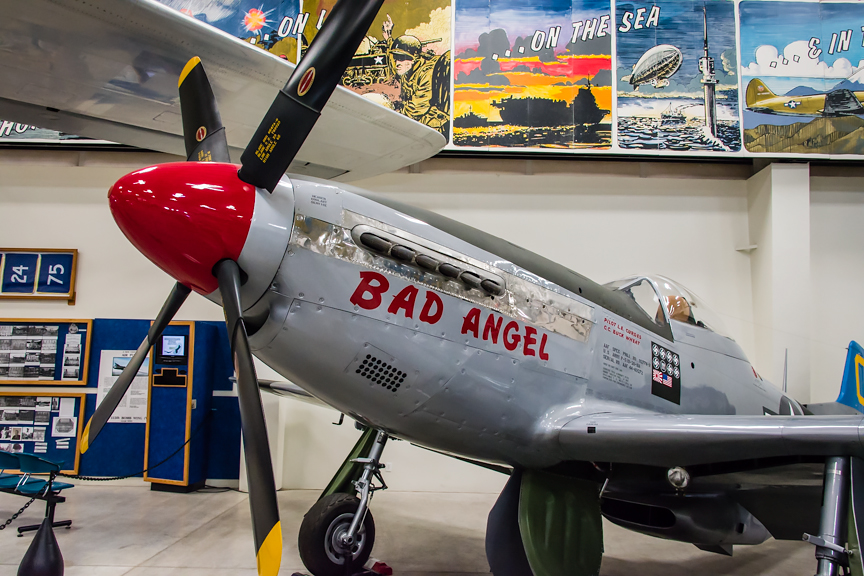 A personal story — when my dad was still alive and living in Florida, I visited him and during my visit the Commemorative Air Force was exhibiting a few of the still-airworthy warbirds at Fort Lauderdale Executive Airport. We went both for our aviation interest but also so he could reminisce about his time in the Army Air Corps toward the end of the war.
A personal story — when my dad was still alive and living in Florida, I visited him and during my visit the Commemorative Air Force was exhibiting a few of the still-airworthy warbirds at Fort Lauderdale Executive Airport. We went both for our aviation interest but also so he could reminisce about his time in the Army Air Corps toward the end of the war.
He really enjoyed seeing the aircraft that day and I asked him if he would like to fly in one of them. He declined whole-heartedly. Good thing, they were charging (as I recall) $1,200 for a ride in the P-51 that they had on display that day. Such expensive airfare would have been a big dent in my wallet — but it would have been fun, I am sure.
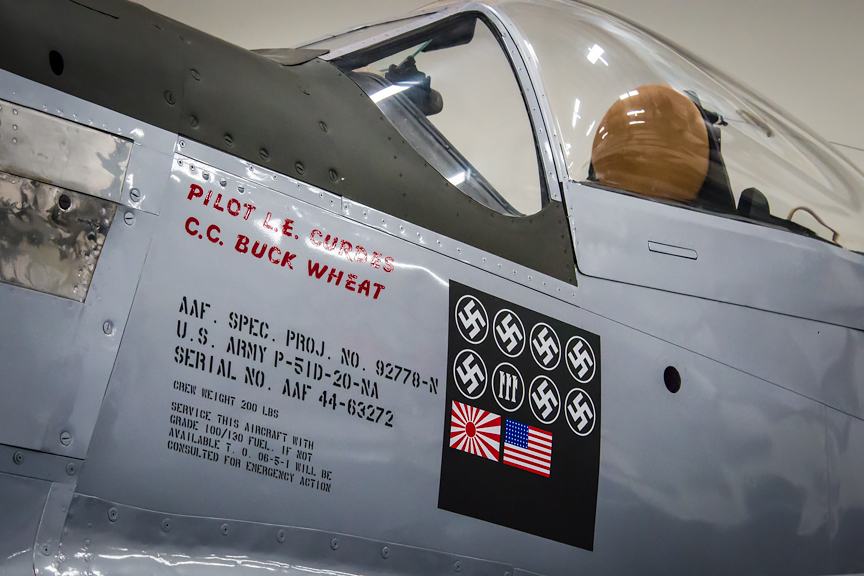 It appears that this aircraft saw some real combat as evidenced by the "kills" recognized on the side of the fuselage.
It appears that this aircraft saw some real combat as evidenced by the "kills" recognized on the side of the fuselage.
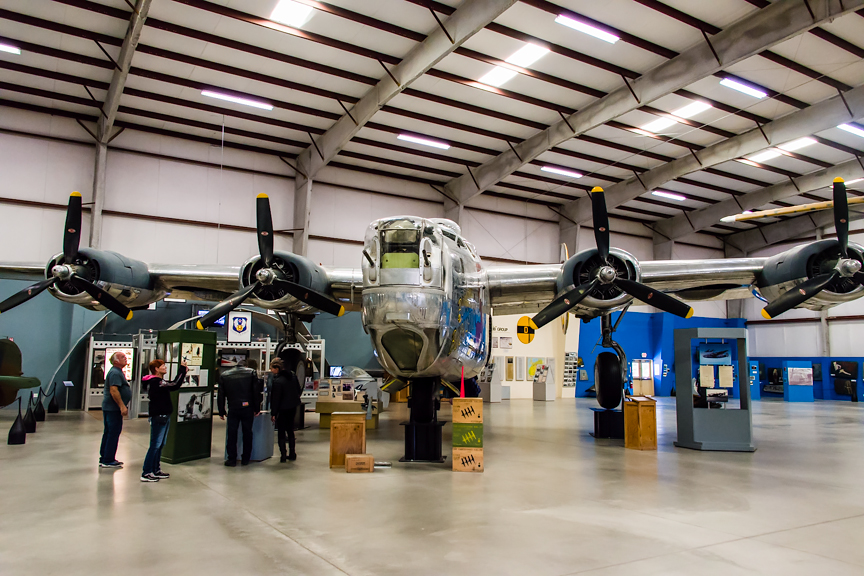 Our next aircraft is a B-24J Liberator, an American heavy bomber. Some 18,482 Liberators were built during World War II — giving it the distinction of being the most produced heavy bomber in history, the most produced multi-engine aircraft in history and the most-produced American military aircraft.
Our next aircraft is a B-24J Liberator, an American heavy bomber. Some 18,482 Liberators were built during World War II — giving it the distinction of being the most produced heavy bomber in history, the most produced multi-engine aircraft in history and the most-produced American military aircraft.
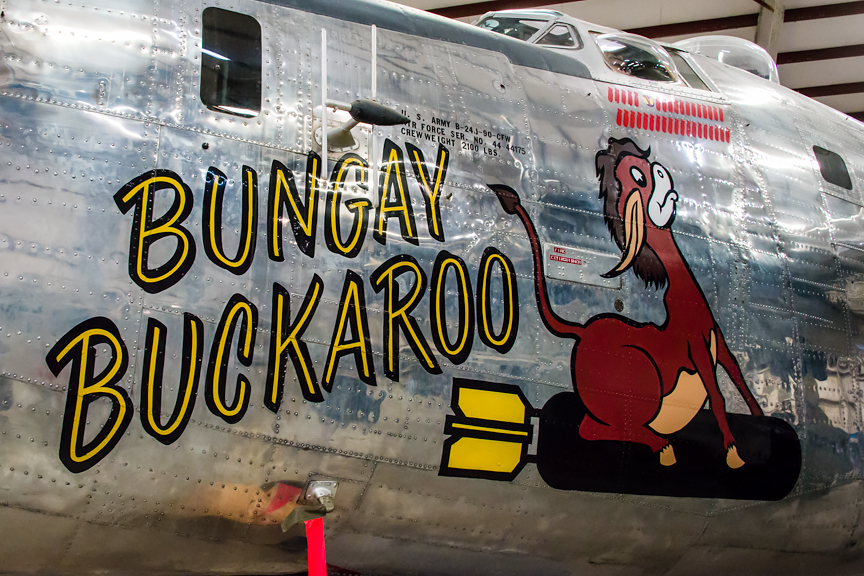 I love the artwork on the side. Also notice the marks just below the cockpit — which I presume denotes the number of bombing missions carried out by this aircraft.
I love the artwork on the side. Also notice the marks just below the cockpit — which I presume denotes the number of bombing missions carried out by this aircraft.
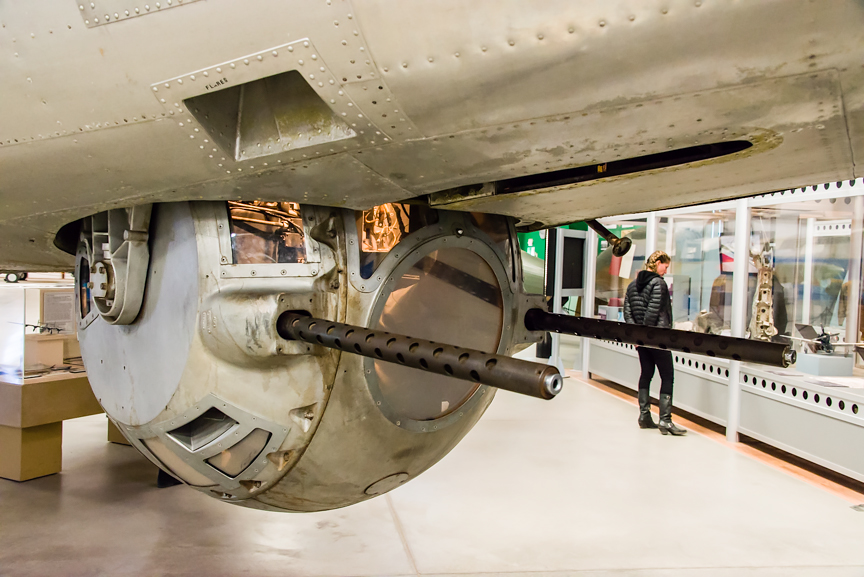 Bombers needed defense against fighters and this is the "stinger" in this bee.
Bombers needed defense against fighters and this is the "stinger" in this bee.
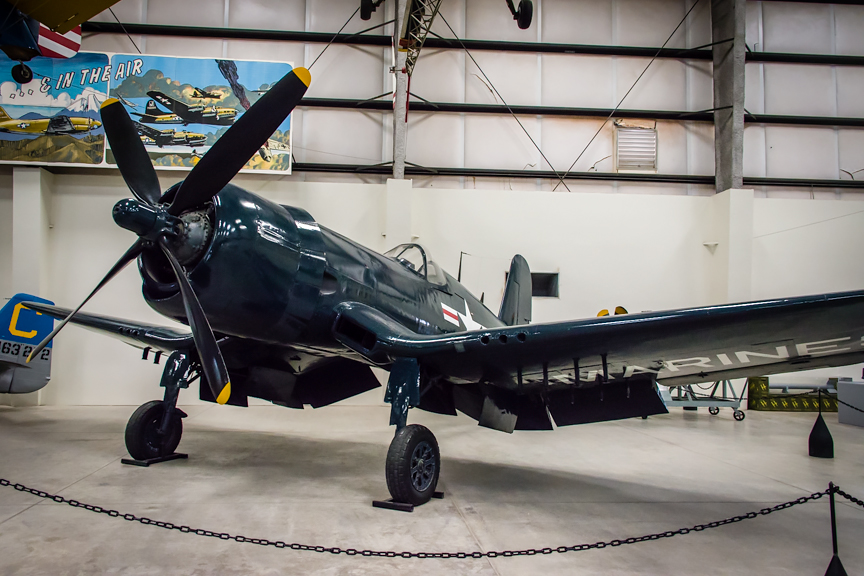 Next up is the Vought F4U Corsair, which is perhaps the best-known American naval fighter of World War II. You cannot tell from this angle but the wings do fold as is typical for naval aircraft which have to be able to land on an aircraft carrier.
Next up is the Vought F4U Corsair, which is perhaps the best-known American naval fighter of World War II. You cannot tell from this angle but the wings do fold as is typical for naval aircraft which have to be able to land on an aircraft carrier.
The F4U-4 was introduced in April 1944 and featured a more powerful engine that raised its top speed to 446 miles per hour. Some Japanese pilots regarded it as the most formidable American fighter of World War II, and the U.S. Navy counted an 11:1 kill ratio.
The 4 version of the Corsair saw limited service in World War II (due to its challenges landing on a carrier), but was the mainstay of Marine ground attack squadrons during the Korean War.
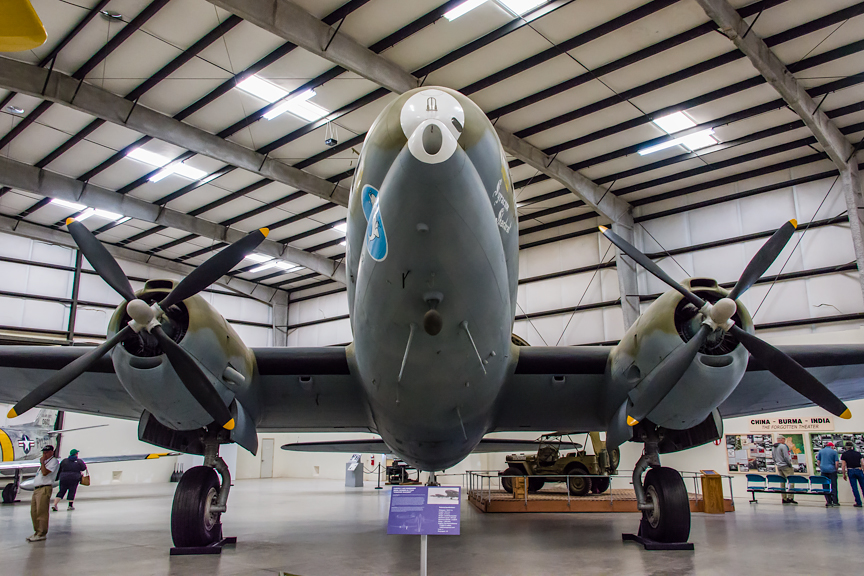 Here we have a Curtis C-46D Commando, a cargo aircraft used by the US Army Air Force. It was derived from the Curtiss CW-20 pressurized high-altitude airliner design and selected because of the large fuselage.
Here we have a Curtis C-46D Commando, a cargo aircraft used by the US Army Air Force. It was derived from the Curtiss CW-20 pressurized high-altitude airliner design and selected because of the large fuselage.
The Commando was very heavily used in the Pacific and became a very familiar sight flying "The Hump" cargo routes over the mountains between India and China.
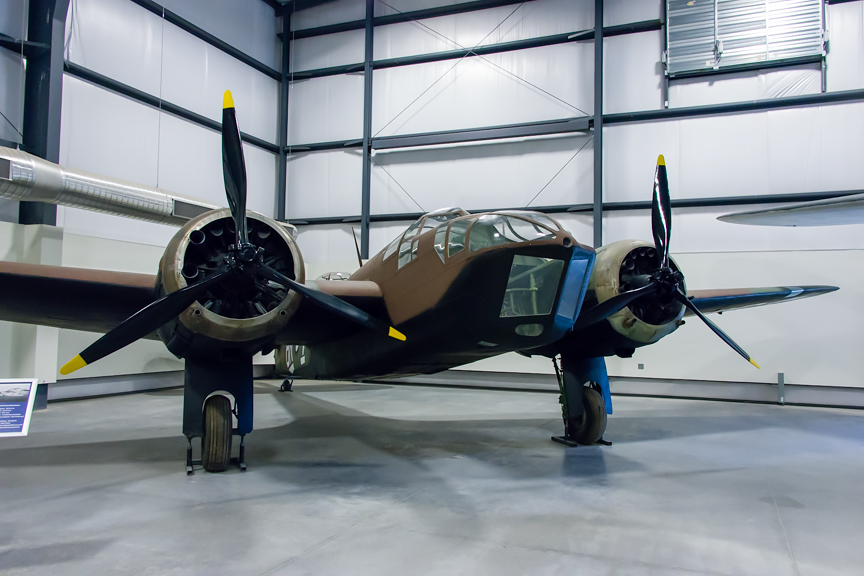 Next up is a Bristol Fairchild Bolingbroke, a maritime patrol aircraft used by the Royal Canadian Air Force during the Second World War. The design was based on the Bristol Blenheim Mk IV bomber. This model incorporated Canadian and American instruments and equipment — but also included anti-icing boots and a dinghy.
Next up is a Bristol Fairchild Bolingbroke, a maritime patrol aircraft used by the Royal Canadian Air Force during the Second World War. The design was based on the Bristol Blenheim Mk IV bomber. This model incorporated Canadian and American instruments and equipment — but also included anti-icing boots and a dinghy.
I had never heard of "anti-icing boots" so I had to look it up. Wikipedia states, "A de-icing boot consists of a thick rubber membrane that is installed over the surface to be de-iced. As atmospheric icing occurs and ice builds up, a pneumatic system inflates the boot with compressed air. This expansion in size cracks any ice that has accumulated, and this ice is blown away into the airflow. The boots are then deflated to return the wing or surface to its optimal shape." And now we know.
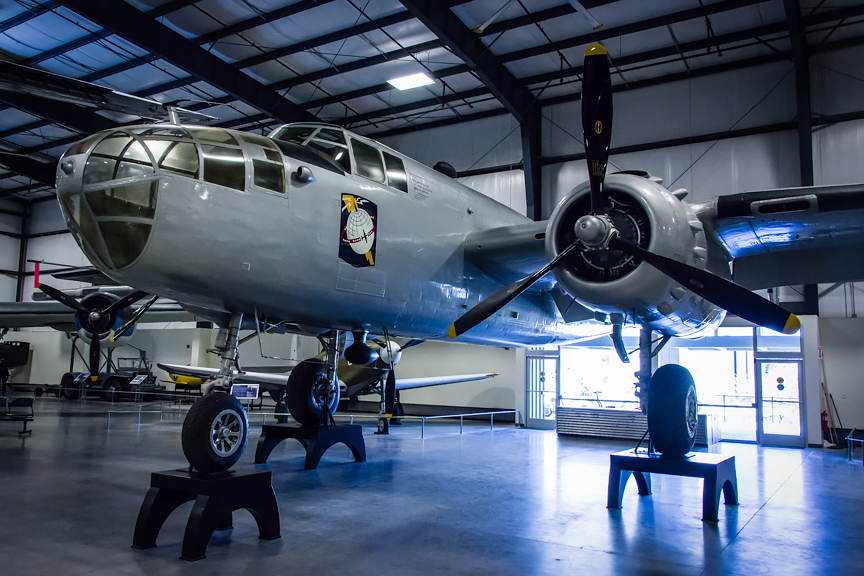 The B-25 is perhaps the most successful American medium bomber of World War II. It served in every theater of the war, with all branches of the U.S. military and with several allied air forces. It is most famous as the type of aircraft flown by the Doolittle Raiders from the aircraft carrier USS Hornet in early 1942.
The B-25 is perhaps the most successful American medium bomber of World War II. It served in every theater of the war, with all branches of the U.S. military and with several allied air forces. It is most famous as the type of aircraft flown by the Doolittle Raiders from the aircraft carrier USS Hornet in early 1942.
B-25s served as both traditional bombers and as gunships with large numbers of machine guns, and in one version a 75mm cannon in the nose. The B-25J returned to the standard "glass" nose for use as a bomber. However, many were converted to a "solid" gunship nose and used for very low-level attacks. The Mitchell continued to serve in the U.S. Air Force until as late as 1960 as staff transports and trainers.
The Consolidated PBY Catalina is the most successful flying boat operated by the United States Navy during World War II and it is also the most produced flying boat in the world with more than 3000 being built in the United States, Canada, and the Soviet Union. The Catalina was ordered by the U.S. Navy in 1933 and the prototype flew for the first time in 1935. The PBY was used extensively by all the major Allied nations for anti-submarine, maritime patrol, and air-sea rescue duties. The PBY-5A version of the aircraft introduced an amphibious capability to the Catalina allowing it to take off from either land or water. Once they left military service many Catalinas were bought for civilian use and could be found all around the world as everything from private luxury flying yachts to firefighting aircraft.
I particularly like the staging of this display — the simulated water beneath the aircraft does make it look like it is really landing (or is it taking off?). It would be nice to have the propellers spinning (even if slowly) but I guess a few visitors might lose their heads.
This marks the end of my tour of the Pima Air and Space Museum — I hope you enjoyed it. If you can make it to Tucson someday, I highly recommend a visit. Seeing the aircraft in person is even better than viewing the photos.
